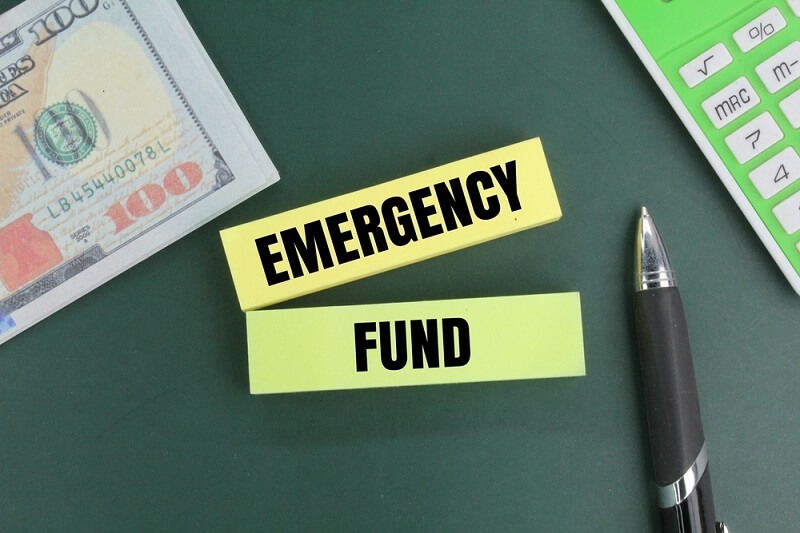
Financial emergencies don't give you a heads-up, but your savings can. Having a buffer can determine whether you are stressed or stable, whether it's an unanticipated job loss, an unexpected medical expense, or an emergency home repair. If you are starting from nothing, you don't have to worry; financial experts have plenty of advice for building an emergency fund from zero that will give you step-by-step guidance depending on your income and life stage.
In this comprehensive guide, we will share our best tips to build an emergency fund, answer the question of how much you need, and show you the fastest ways to build emergency fund savings—plus provide insight into where to keep it safe.
An emergency fund is money that is reserved for unexpected expenses. It is a protective charge that keeps you from debt when life throws you financial surprises.
Emergencies that can eat into your budget include
With no savings, most people in the U.S. use a credit card or loan to pay for emergencies, thus incurring a debt spiral with high-interest payments that are difficult to escape. That's why understanding how to set up and use an emergency savings plan is vital to long-term financial health.
Most financial experts suggest that if possible, you should have three to six months' worth of expenses saved as your emergency fund. However, your unique situation depends on the right amount of emergency fund savings.
You may want to consider:
Emergency Funds for US Families: Start small. Aim for $500-$1,000 as your first landmark. Then, slowly build up to your emergency fund goal.
Even if you live paycheck to paycheck, you can still take steps to save. Here’s a breakdown of expert-approved strategies for building your emergency fund with consistency and speed.
Know your numbers. Add up monthly essentials like rent, groceries, insurance, and utilities. Multiply by 3 or 6 to get your whole emergency goal.
Example: If your monthly expenses are $2,500, a 3-month fund equals $7,500.
Tip: Break this into mini-goals—$500, $1,000, then one month’s expenses.
Keep your emergency savings out of your checking account to avoid temptation. Choose an account with:
Best emergency fund account types in the USA:
Avoid tying up funds in CDs or investment accounts—they aren’t liquid enough for emergencies.
Speed matters when you’re building a safety net. Here are effective techniques to accelerate your savings progress:
Set up a recurring transfer from your checking account to your emergency fund on the day you get paid. Even $20–$50 per paycheck adds up.
Tax refund? Birthday money? Work bonus? Don’t spend it—save it. Apply 50–100% of any windfall directly to your emergency fund.
Cancel one subscription or dining-out habit. If you spend $40/week on takeout, cutting back gives you $160/month to save.
Freelancing, ridesharing, selling items online—extra income can go entirely into your fund. This is one of the quickest ways to build emergency fund buffers.
Use apps that round up purchases to the nearest dollar and deposit the difference into your savings. It’s automatic and painless.
Emergency Fund Tips for US Families
Families have unique challenges when it comes to emergency savings. These tips help household budgets stay prepared:
Consider naming your emergency fund something motivational—like “Family Safety Net”—to remind yourself of its importance.

Choosing the proper storage for your funds is as important as building it. You want to earn interest while ensuring your money stays safe and easily accessible.
Avoid using checking accounts, stocks, or retirement accounts for your emergency fund. They either lack discipline, earn low interest, or carry penalties.
An emergency fund is for true emergencies, not vacations, shopping, or elective spending.
Think of your fund like a fire extinguisher—only break the glass when needed.
Common mistakes can derail building savings. Avoid these traps to stay on track:
Keeping emergency funds in your checking account makes it too easy to dip into. You can use a separate account.
If you have high-interest credit card debt, consider saving a mini-emergency fund ($1,000) first, then focus on paying down the debt.
A credit card is not an emergency fund. Interest charges and debt accumulation make emergencies more expensive.
Waiting for a better job or income boost before saving? Start now with what you have—time is your greatest ally.
Did you use your emergency fund? No shame—it did its job. The next step is to refill it without delay.
Myth 1: “I don’t earn enough to save.”
Truth: Even $10/week adds up. Saving is about consistency, not perfection.
Myth 2: “My credit card is my backup.”
Truth: Interest will eat your finances alive. Credit is risky in emergencies.
Myth 3: “I’ll start when I’m debt-free.”
Truth: Emergencies happen anytime. A starter fund is essential even during debt payoff.
Here’s a quick-start checklist to build your emergency fund from zero:
Establishing an emergency fund isn't about how much money you have—it's about creating resilience. No matter your salary or past financial experiences, you can switch from zero to financial protection.
If you create a habit, use the right tools, and follow me for the best tips on creating an emergency fund from 0, you can stop stressing about the future and focus on what is ahead.
Remember that money is just one part of the equation—peace of mind is the real prize and should be attainable by all.
This content was created by AI